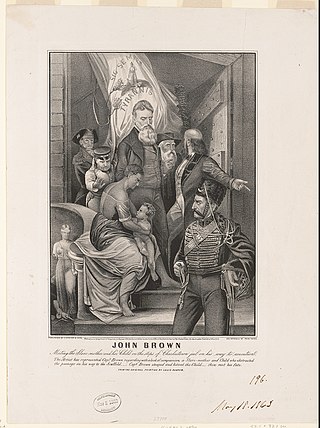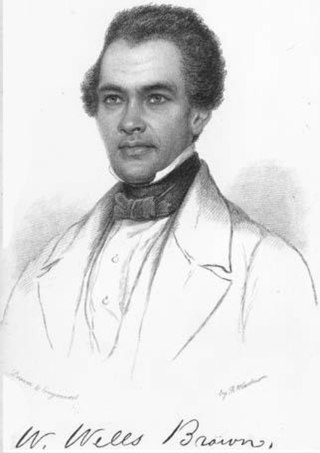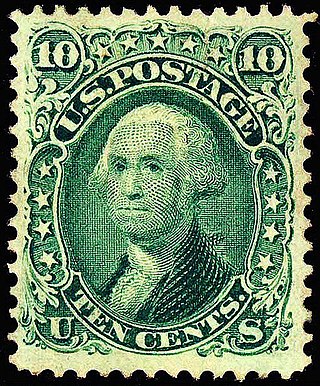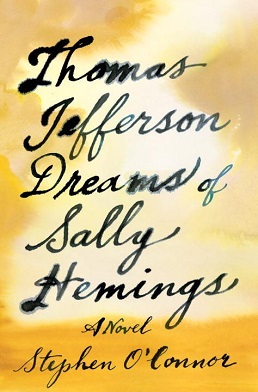
Thomas Jefferson was an American statesman, diplomat, lawyer, architect, philosopher, and Founding Father who served as the third president of the United States from 1801 to 1809. He was the primary author of the Declaration of Independence. Following the American Revolutionary War and prior to becoming president in 1801, Jefferson was the nation's first U.S. secretary of state under George Washington and then the nation's second vice president under John Adams.

Monticello was the primary plantation of Thomas Jefferson, a Founding Father and the third president of the United States, who began designing Monticello after inheriting land from his father at age 14. Located just outside Charlottesville, Virginia, in the Piedmont region, the plantation was originally 5,000 acres (20 km2), with Jefferson using the forced labor of Black slaves for extensive cultivation of tobacco and mixed crops, later shifting from tobacco cultivation to wheat in response to changing markets. Due to its architectural and historic significance, the property has been designated a National Historic Landmark. In 1987, Monticello and the nearby University of Virginia, also designed by Jefferson, were together designated a UNESCO World Heritage Site. The current nickel, a United States coin, features a depiction of Monticello on its reverse side.
Sarah "Sally" Hemings was an enslaved woman with one-quarter African ancestry owned by president of the United States Thomas Jefferson, one of many he inherited from his father-in-law, John Wayles.

"Children of the plantation" is a euphemism used to refer to people with ancestry tracing back to the time of slavery in the United States in which the offspring was born to black African female slaves in the context of the trans-Atlantic slave trade and Non-Black men, usually the slave's owner, one of the owner's relatives, or the plantation overseer. These children were often considered to be the property of the slave owner and were often subjected to the same treatment as other slaves on the plantation. Many of these children were born into slavery and had no legal rights, as they were not recognized as the legitimate children of their fathers. The men who fathered these children often used their power and authority to force themselves upon the black females who were under their control.

Clotel; or, The President's Daughter: A Narrative of Slave Life in the United States is an 1853 novel by United States author and playwright William Wells Brown about Clotel and her sister, fictional slave daughters of Thomas Jefferson. Brown, who escaped from slavery in 1834 at the age of 20, published the book in London. He was staying after a lecture tour to evade possible recapture due to the 1850 Fugitive Slave Act. Set in the early nineteenth century, it is considered the first novel published by an African American and is set in the United States. Three additional versions were published through 1867.

William Wells Brown was an American abolitionist, novelist, playwright, and historian. Born into slavery near Mount Sterling, Kentucky, Brown escaped to Ohio in 1834 at the age of 19. He settled in Boston, Massachusetts, where he worked for abolitionist causes and became a prolific writer. While working for abolition, Brown also supported causes including: temperance, women's suffrage, pacifism, prison reform, and an anti-tobacco movement. His novel Clotel (1853), considered the first novel written by an African American, was published in London, England, where he resided at the time; it was later published in the United States.

Jefferson in Paris is a 1995 historical drama film, directed by James Ivory, and previously entitled Head and Heart. The screenplay, by Ruth Prawer Jhabvala, is a semi-fictional account of Thomas Jefferson's tenure as the Ambassador of the United States to France before his presidency and of his alleged relationships with Italian-English artist Maria Cosway and his slave, Sally Hemings.
Eston Hemings Jefferson was born into slavery at Monticello, the youngest son of Sally Hemings, a mixed-race enslaved woman. Most historians who have considered the question believe that his father was Thomas Jefferson, the third President of the United States. Evidence from a 1998 DNA test showed that a descendant of Eston matched the Jefferson male line, and historical evidence also supports the conclusion that Thomas Jefferson was probably Eston's father. Many historians believe that Jefferson and Sally Hemings had six children together, four of whom survived to adulthood. Other historians disagree.

Partus sequitur ventrem was a legal doctrine passed in colonial Virginia in 1662 and other English crown colonies in the Americas which defined the legal status of children born there; the doctrine mandated that children of slave mothers would inherit the legal status of their mothers. As such, children of enslaved women would be born into slavery. The legal doctrine of partus sequitur ventrem was derived from Roman civil law, specifically the portions concerning slavery and personal property (chattels), as well as the common law of personal property; analogous legislation existed in other civilizations including Medieval Egypt in Africa and Korea in Asia.
The Jefferson–Hemings controversy is a historical debate over whether there was a sexual relationship between the widowed U.S. President Thomas Jefferson and his slave and sister-in-law, Sally Hemings, and whether he fathered some or all of her six recorded children. For more than 150 years, most historians denied rumors that he had a slave concubine, Sally Hemings. Based on his grandson's report, they said that one of his nephews had been the father of Hemings's children. In the 21st century, most historians agree that Jefferson is the father of one or more of Sally's children.

Thomas Jefferson is a 1997 two-part American documentary film directed and produced by Ken Burns. It covers the life and times of Thomas Jefferson, the 3rd President of the United States.

Madison Hemings was the son of the mixed-race enslaved woman Sally Hemings and, according to most Jefferson scholars, her enslaver, President Thomas Jefferson. He was the third of her four children to survive to adulthood. Born into slavery, according to partus sequitur ventrem, Hemings grew up on Jefferson's Monticello plantation, where his mother was also enslaved. After some light duties as a young boy, Hemings became a carpenter and fine woodwork apprentice at around age 14 and worked in the joiner's shop until he was about 21. He learned to play the violin and was able to earn money by growing cabbages. Jefferson died in 1826, after which Sally Hemings was "given her time" by Jefferson's surviving daughter Martha Jefferson Randolph.
Thomas Jefferson, the third president of the United States, owned more than 600 slaves during his adult life. Jefferson freed two slaves while he lived, and five others were freed after his death, including two of his children from his relationship with his slave Sally Hemings. His other two children with Hemings were allowed to escape without pursuit. After his death, the rest of the slaves were sold to pay off his estate's debts.
Harriet Hemings was born into slavery at Monticello, the home of Thomas Jefferson, third President of the United States, in the first year of his presidency. Most historians believe her father was Jefferson, who is now believed to have fathered, with his slave Sally Hemings, four children who survived to adulthood.

Presidents of the United States have frequently appeared on U.S. postage stamps since the mid-19th century. The United States Post Office Department released its first two postage stamps in 1847, featuring George Washington on one, and Benjamin Franklin on the other. The advent of presidents on postage stamps has been definitive to U.S. postage stamp design since the first issues were released and set the precedent that U.S. stamp designs would follow for many generations.

Daveed Daniele Diggs is an American actor, rapper, and singer-songwriter. He is the vocalist of the experimental hip hop group Clipping, and in 2015, he originated the dual roles of Marquis de Lafayette and Thomas Jefferson in the musical Hamilton, for which he won a 2016 Tony Award for Best Actor in a Featured Role in a Musical. Along with the main cast of Hamilton, he was awarded a Grammy Award for Best Musical Theater Album in the same year.
Sally Hemings has been represented in the media in popular culture due to her relationship with American Founding Father and president Thomas Jefferson. She has been portrayed in films and the inspiration for novels, plays and music.
"Cabinet Battle #1" & "Cabinet Battle #2" are songs written for Act II of the musical Hamilton, based on the life of Alexander Hamilton, which premiered on Broadway in 2015. Lin-Manuel Miranda wrote both the music and lyrics to the songs.

Thomas Jefferson Dreams of Sally Hemings is a 2016 historical fiction novel by American writer Stephen O'Connor. The novel depicts the relationship between Thomas Jefferson, third President of the United States, and Sally Hemings, his slave and sister-in-law. The depiction, which portrayed the relationship as consensual and romantic, was the focus of controversy due to questions about Hemings's status as a slave and her age difference with Jefferson.


















